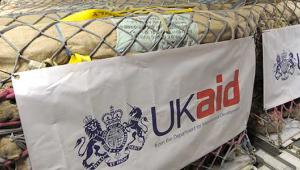The UK’s commitment to spending 0.7% of Gross National Income (GNI) on aid was enshrined in law in 2015. Since then, it’s been a frequent topic of debate: supportive voices are proud of Britain’s promise, while sceptics rarely miss an opportunity to criticise the target. But what is the background of 0.7%, why is it divisive and what does it mean for the United Kingdom currently re-examining its place on the world stage?
Spending 0.7% of GNI on aid was first suggested in 1968 by the OECD and all members signed up to meet the target. Multiple ‘recommitments’ later, however, only a handful of countries have ever actually met 0.7% – Sweden, Norway, Denmark, the Netherlands, Luxembourg, United Arab Emirates, and the UK – the only major economy to hit the target.
The UK first met the target in 2014, and became law a year later thanks to a Private Member’s Bill from then MP Michael Moore, the International Development (Official Development Assistance Target) Act. This was welcomed as a huge achievement by NGOS; the conversation could now shift from ‘how much’ to focus on improving quality.
This was not, however, the end of the debate. Despite all major parties including 0.7% in their 2015 manifestos and the bill passing with a significant majority, critics have frequently called for it to be repealed. So what are the arguments?
For supporters of 0.7%, it’s proof we’re still a global country who stand with the world’s poorest no matter what. Meeting the target means development can be planned over the long term, avoiding short-termism that fails to achieve sustainable change. Aid makes sense in an increasingly interconnected world, consider Ebola and how no country was immune. That Britain keeps its word shows we understand the threats that aid addresses.
Sceptics point to it being a moving target. Being a fixed percentage of GNI, the waxing and waning of the economy changes the amount. If the economy shrinks there’s a risk of overspend, while growth means there’s the chance of an underspend, allegedly leading to more attention on getting the money out the door than following where it goes.
For now, the 0.7% target seems safe in the UK. Both prime minister Theresa May and international development secretary Priti Patel have reaffirmed the government’s commitment to it. One thing that will change, however, is who will spend UK aid to help meet 0.7%. An increasing amount of UK aid will be spent by departments other than DFID, including more responsibility taken by the Ministry of Defence, Foreign & Commonwealth Office and others.
This risks UK aid replacing its poverty-fighting purpose with one of strategic interest. Other departments who spend aid have previously been less transparent than DFID, who are among the best for openness. If more aid is spent less transparently, it could lead to further criticism as people can’t then follow the money.
This target is more important than ever – at a time when the UK’s international standing is uncertain – 0.7% shows we’re still part of a global community.












